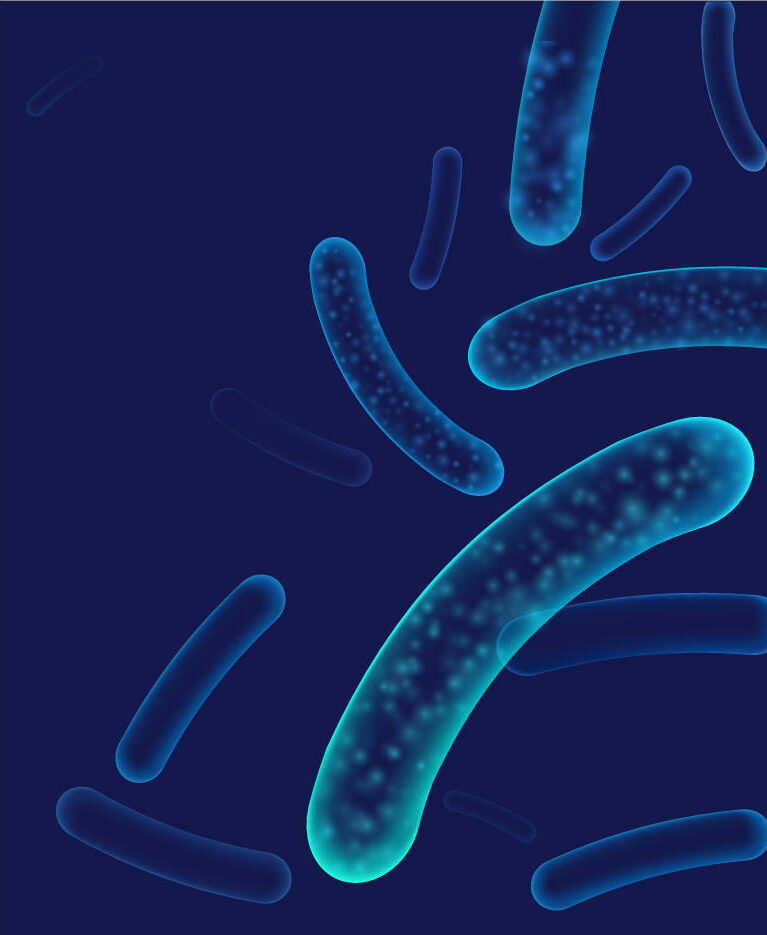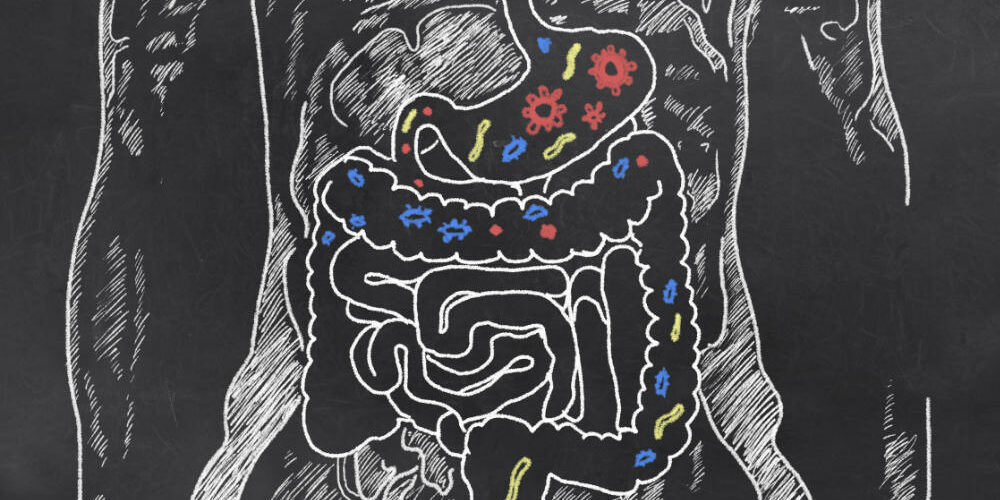Considered to be an organ in its own right, our intestinal microbiota, with its rich and diverse composition of microorganisms, has many functions.
Taken as a whole, this ‘organ’ has an extremely varied genetic and, consequently, protein arsenal. It has a number of tools that contribute to the proper functioning of our body and whose range of action is not limited to our intestine alone…
What is microbiota?
This refers to all the micro-organisms (bacteria, yeasts, viruses, fungi) living in a specific environment. On the scale of the human body, this refers to all the micro-organisms colonising a specific area and which are in close association/interaction with our organism. Here are just a few examples of the microbiota within each of us:
- Lung microbiota
- The ocular microbiota
- The skin microbiota
- Urinary microbiota
- Placental microbiota
- …
… And another, certainly the most studied, associated with our digestive system: the intestinal microbiota. The intestinal microbiota is unique to each individual, yet its functions are identical. Its genetic arsenal, known as the microbiome, enables it to perform a wide range of functions, and the more diverse the microbiota, the greater its range of skills.

What are the functions of the intestinal microbiota?
The usual functions of the microbiota include a supporting role in :
- Digestion and fermentation of non-digestible food residues and mucus
- Modulation of intestinal nutrient absorption capacity
- The synthesis of certain vitamins (biotin, folate, vitamin K, etc.)
- The production of short-chain fatty acids (a source of energy for the body)
- Modulation of intestinal permeability (maintenance of the intestinal barrier)
- Bile acid metabolism (consequences on inflammation)
- Induction of the production of antimicrobial peptides by certain cells in our body
- Induction of the secretion of certain antibodies in the intestines (GI A)
- Induction of immune functions with the development and maturation of the mucosal and general immune system
- Protective functions against pathogens by competing with them (nutrients, receptors) or by producing antimicrobial factors (bacteriocins…).
- Stimulation of serotonin production involved in mood modulation
- Interactions with xenobiotics (pharmacomicrobiomics, etc.)
- Controlling other micro-organisms
And this is undoubtedly only a tiny part of what we know, with other functions and mechanisms still to be discovered. This complex and early partnership (from the womb), a veritable symbiosis, suggests numerous preventive nutritional approaches to maintaining our inner balance.









